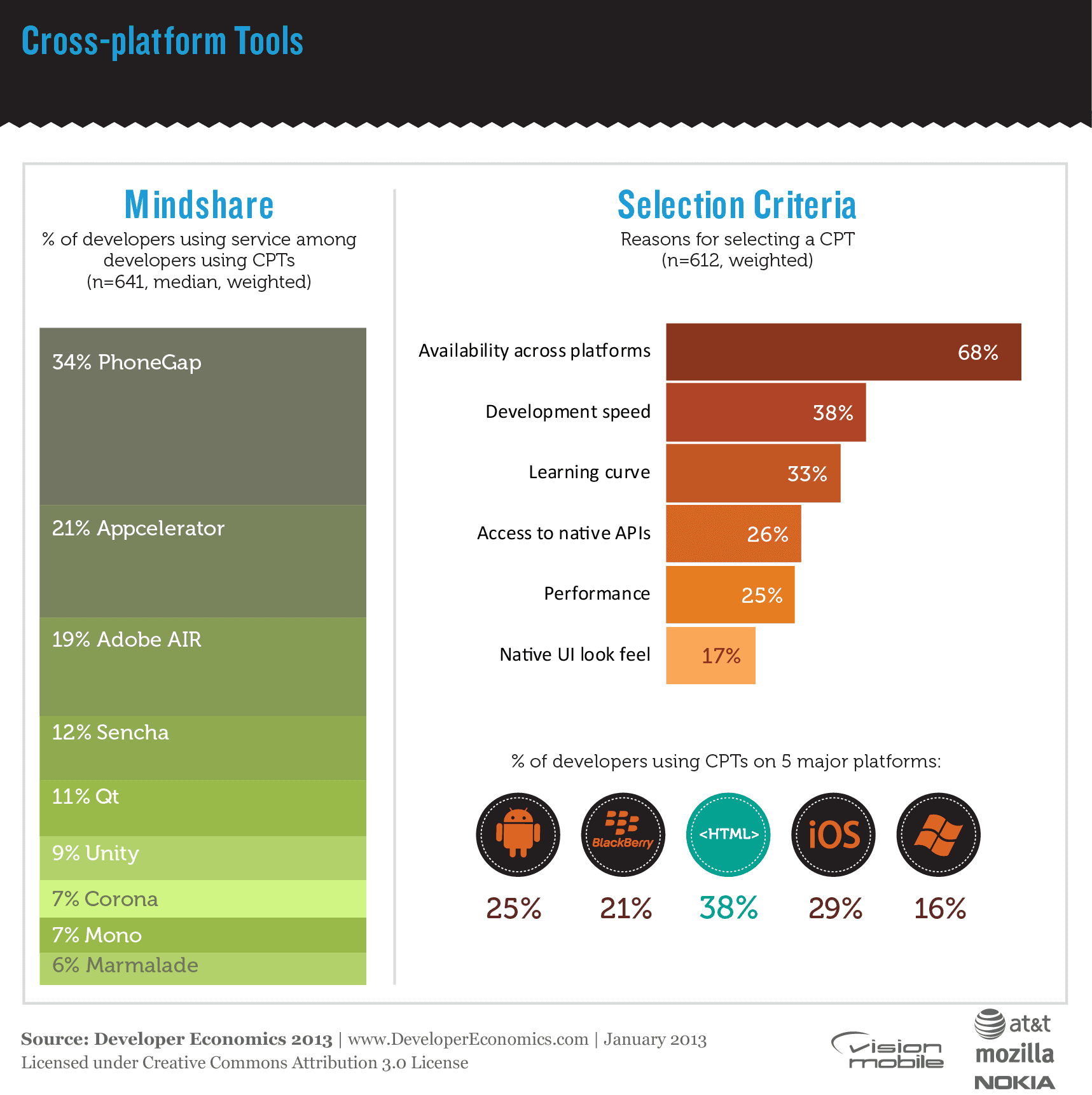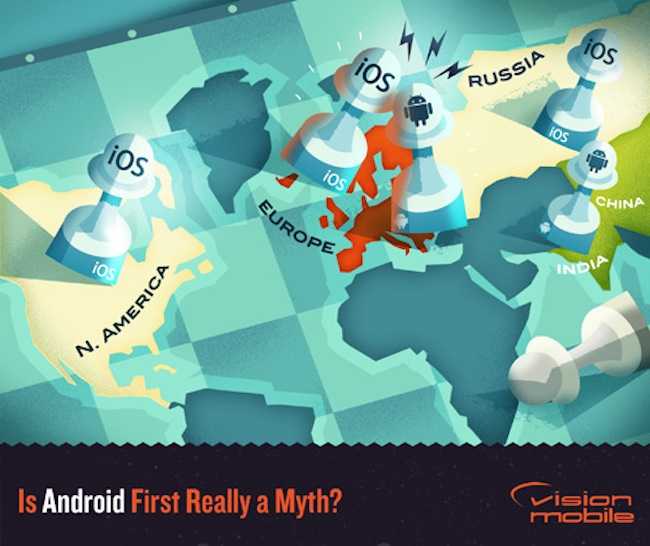Latest Posts

19 November, 2013
The most popular revenue models appear to be those that are easiest to implement. The developers using them tend to have lower revenues. This may be due to greater competition or it might just be a result of less sophisticated app businesses producing less valuable apps. There are some interesting differences between platforms but subscriptions appear to be a relatively untapped gold mine everywhere, although maybe not for everyone.

12 November, 2013
As the market temperature for cross-platform tools (CPTs) continues its steep climb into hotter territory, it’s understandable why many feel we are witnessing a mobile fragmentation that is perhaps much larger and more significant than the recent wars waged over the desktop. If this fragmentation tells us anything, it’s that [tweetable]cross-platform tools for mobile development […]

30 October, 2013
Popular perception in the tech press is that iOS gets all the best apps first. With Android market share beginning to dwarf that of iOS globally, there’s lots of speculation around when developers will switch to Android first. Our data shows iOS is still the priority for startups in the U.S. but that doesn’t necessarily […]

23 October, 2013
In the great app store gold rush of the last 5 years a lot of vendors of virtual picks and shovels have set up shop, hoping to cash in on the boom regardless of which individual developers succeed in a fiercely competitive market. Having surveyed developers on their tool choices and revenues, we can see […]

14 October, 2013
[VisionMobile’s Andreas Pappas was recently quizzed on app business models, best practices and strategies for developers and entrepreneurs. In this post we’re presenting the most interesting questions and answers from this interview. These are tough questions that all developers and entrepreneurs are faced with in the early stages of their ventures.] Q1: I am […]

07 October, 2013
The mobile apps business is maturing and while most of the media attention is still focussed on the latest app store success stories, developers are finding lots of better ways to make revenue with their apps. Considering all revenue sources, which categories of application are generating the most money and what’s the competition like on each platform?

12 September, 2013
On desktop computers web apps have come to dominate many application categories. They are easier to develop and deploy across multiple platforms and it’s possible to iterate much faster. A very large number of developers would like to be able to apply the same technologies and techniques on mobile devices but very few are able to do so successfully, particularly for mass market consumer apps. One of the most important reasons for this is performance. Resolving this issue is much more about politics than technology.

29 July, 2013
The term “web app” has been around for the past years – we’ve all heard it and used it more times than we care to remember. Yet there remains a debate on where “web sites” end, and “web apps” begin. Ciprian Borodescu, CEO and Co-founder of Webcrumbz, presents the opinions of several prominent figures in the web technology domain and discusses the ‘app-ification’ of the web.

24 July, 2013
Creating versions of an app for multiple platforms (at least iOS & Android) is an increasingly common requirement. Building and maintaining native code for every platform supported is both difficult and expensive. Cross-Platform Tools (CPTs) offer a solution to this problem by enabling sharing of code across platforms and in many cases a single code base can target multiple platforms. With such significant cost savings available, why don’t all developers use CPTs?

17 July, 2013
A new SDK economy has sprung up to support the needs of the 500,000+ mobile developers and the app economy. Guest author Panos Papadopoulos, CEO of Bugsense, reviews the growth and rapid consolidation of the SDK economy and the impending rise the Mega SDK vendors.